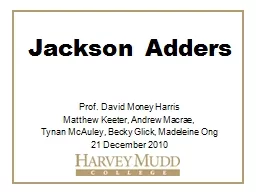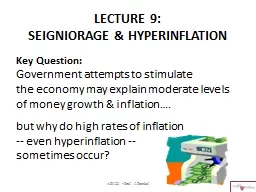PPT-Jackson Adders Prof. David Money
Author : pasty-toler | Published Date : 2018-02-25
Harris Matthew Keeter Andrew Macrae Tynan McAuley Becky Glick Madeleine Ong 21 December 2010 Jackson Adders 2 Overview Definitions Tree Adders Ling Adders Jackson
Presentation Embed Code
Download Presentation
Download Presentation The PPT/PDF document "Jackson Adders Prof. David Money" is the property of its rightful owner. Permission is granted to download and print the materials on this website for personal, non-commercial use only, and to display it on your personal computer provided you do not modify the materials and that you retain all copyright notices contained in the materials. By downloading content from our website, you accept the terms of this agreement.
Jackson Adders Prof. David Money: Transcript
Download Rules Of Document
"Jackson Adders Prof. David Money"The content belongs to its owner. You may download and print it for personal use, without modification, and keep all copyright notices. By downloading, you agree to these terms.
Related Documents














